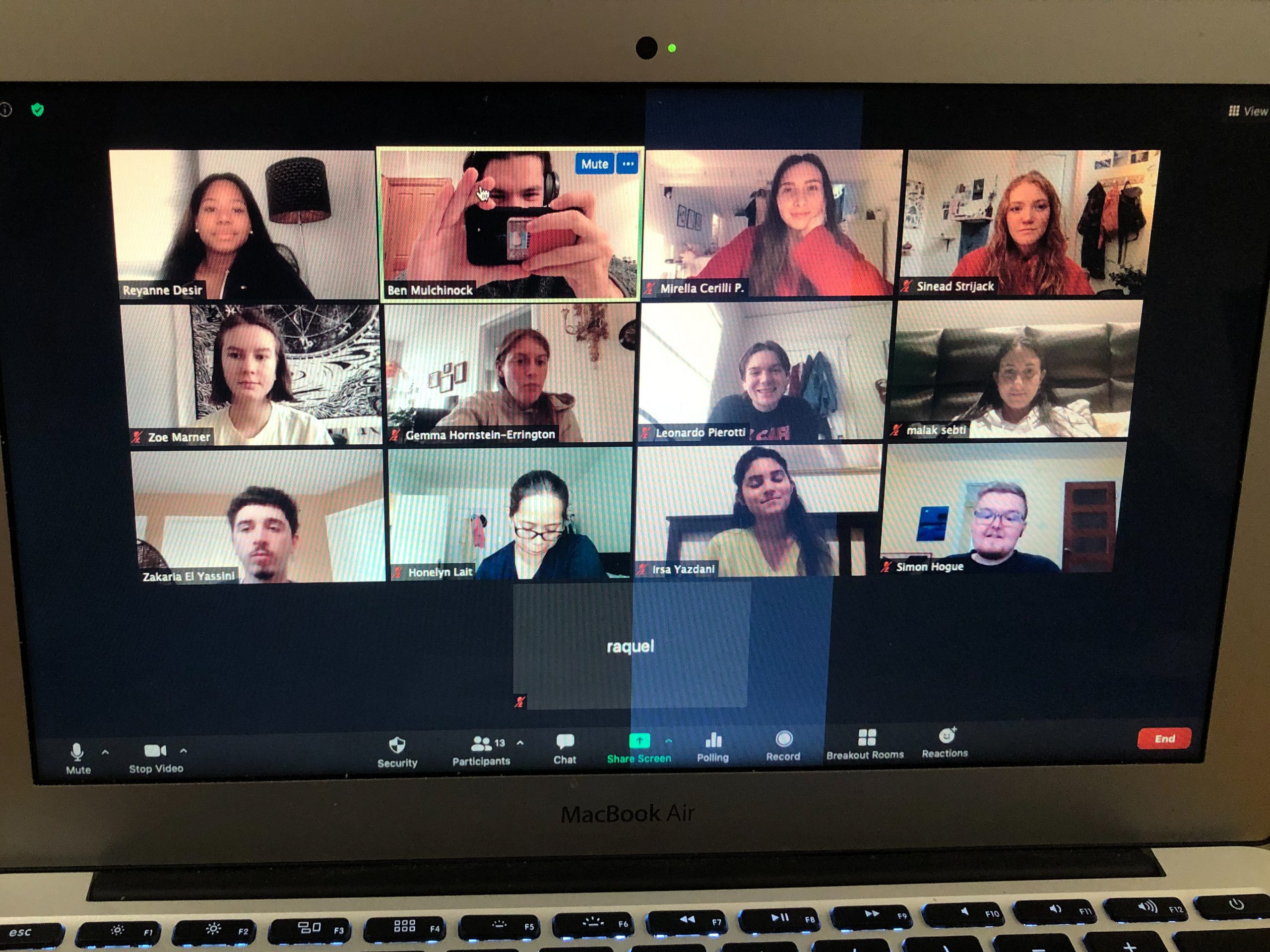Amanda Garbutt has been writing her own recipes since she was a little girl. When she left her home in Ottawa, Ont. to attend McGill University, she took her binders of recipes with her. After moving out of residence and into an apartment of her own, she began to put these recipes to good use by cooking for her friends including April Engelberg. A big fan of Garbutt’s easy and delicious meals, Engelberg decided these recipes needed to be shared with students everywhere.
After some convincing by Engelberg, Garbutt decided to release her inner chef on the small screen in the form of a campus cooking show. In 2008, the two McGill students created The Hot Plate, a cooking show that was made for students by students. The show started off on TVMcGill and is now available on their website. With Garbutt as host and Engelberg as creator, the two co-producers took The Hot Plate and made it a campus success.
The two McGill graduates have recently decided to tackle a new project: The Hot Plate cookbook, which will be released within the next few weeks (an exact date has not yet been released). Both the show and the cookbook feature recipes that are simple, cheap and easy to make, as to not intimidate those entering the kitchen for the first time.
A look at the basics
The first few things every new cook needs is ingredients and equipment. Garbutt and Engelberg agreed that “pots, pans, a cutting board and a good knife” are important basics.
“You’re going to need pantry staples too,” adds Garbutt. She lists oil, cans of beans, canned goods in general and honey as items to put on your shopping list.
Ingredients such as these are great to have around the house because they have a long shelf life so infrequent chefs do not have to worry about them spoiling. Also, they are great ways to add flavour accents to your dish.
“You’re also going to need the basic vegetables and fruits like celery and tomatoes,” adds Garbutt.
Simple rules to cook by
“A lot of people don’t cook because they see it as a burden,” says Garbutt who adds that her friends, including Engelberg, used to see cooking that way.
Then, she started inviting her friends to come over so they could cook together. Garbutt explains that all of her friends saw how much fun cooking it.
“Student life is fun,” says Garbutt. “So why not have more fun by cooking?”
Enjoying yourself is important when cooking because you are less likely to be afraid or intimidated by the task before you.
This fear is something Garbutt says happens to new cooks, especially with dishes that seem more complicated or that take time to prepare.
“People are afraid to make risottos and I think it’s because they find it to be time-consuming,” says Garbutt. “But, they’re delicious and you could add anything to them. I’m making it my life goal to change the way people see risottos.
Complicated techniques explained
Many recipes call for techniques that some new cooks are unfamiliar with. Sautéing, simmering and poaching are terms that beginners may not know how to do properly. While there is always the option of searching the techniques online, Garbutt and Engelberg suggest picking up a copy of their cookbook, which has a glossary.
“We even have easy techniques in it like boiling,” says Engelberg, who explains that this is done in case someone is unfamiliar with the process.
Along with the book’s glossary, the show’s website will soon have free videos online that go through 34 of the techniques featured in the book. Garbutt and Engelberg think that it is important to have this online support so that readers can not only understand what these techniques mean but also see how to do them properly.
The glossary includes some more complicated-sounding terms like “chiffonade,” says Garbutt. She exclaims “You have no idea how long it took me to say that word properly!” Chiffonade is when you cut green vegetables into thin, long strips, a process that is relatively easy, but highlights why the glossary and the videos are so helpful. To a new cook, a term like chiffonade looks very complicated, when in reality it means something pretty simple.
Don’t attempt to make a Martha original
Famous chefs like Julia Child and Mario Batali are extremely talented, but a good portion of their recipes are not made for university students who are new to the kitchen. Yes, some of their recipes seem really appealing, but Engelberg cautions against trying them.
“Don’t start cooking by choosing a Martha Stewart (recipe) the first time,” advises Engelberg “Martha’s food is awesome, but [her recipes] are not the easiest to make.”
It is also important not to be discouraged if your dish does not come out tasting right or looking presentable the first time you try to make it. The first time is usually painful, but you will learn from your mistakes and should still be proud of your attempt, because it is never easy trying out a new recipe. Keep in mind, even Martha Stewart was not always the talented chef we know today.
Cooking on a student budget
Just because a cook may have restrictions doesn’t mean that their dishes are going to be boring. Most simple dishes are easy on the wallet, though sometimes the ingredients can cost a little more then a student is willing to dish out. Garbutt tries to find ways around high prices by swapping ingredients, like she does in her signature dish of macaroni and cheese.
Instead of purchasing an array of pricey cheeses, she uses fondue packs. “These are easy-to-use packs that retail for $7- $12 per pound and serve up six portions,” says Garbutt. “Well, four if you are in need of a little extra TLC.”
Creativity is not limited to the ingredients. Although new cooks often do not have all the expensive kitchen equipment, rather than feeling inadequate, they should know that there is always a cheap alternative out there.
“You’ll see Amanda use a water bottle as a rolling pin, because how many people even have a rolling pin?” adds Engelberg.
With midterms lurking around every corner, Garbutt offers up her signature dish which is easy and quick to make.
Mac’ n’ cheese
This dish serves four.
Ingredients:
– 450g (about 1 lb) box penne rigate
– 450g pack of fondue cheese
– 1 cup fresh or frozen peas
– 1/3 cup milk or cream
– 1/2 cup freshly-grated parmesan
– 1 tbsp kosher salt
– 1 tbsp unsalted butter, for greasing
Preparation:
1. Preheat oven to 400 F.
2. Bring a large pot of water to a boil and add 1 tbsp kosher salt.
3. In a medium pot, begin to melt the fondue cheese over medium heat.
4. Add the pasta to the boiling salted water and cook until al dente. Drain.
5. Meanwhile, add the milk and peas to the melted cheese.
6. Toss the drained pasta with the cheese until thoroughly combined.
7. Grease a baking dish with butter.
8. Add pasta to the baking dish.
9. Sprinkle the parmesan evenly over the top. Bake until bubbly and heated through, about 15 minutes.
*For those who like a crispy top, flip the broiler on for 1 minute.
For video instructions visit www.bit.ly/9In9z
The Hot Plate cookbook is set to be released within the month.
With 85 budget-friendly recipes, the cookbook even tells its readers about eight ways to make your leftovers into new dishes.
To watch the show, download recipes or find out more information about the book’s release visit www.thehotplate.net



